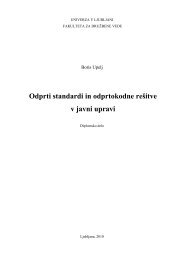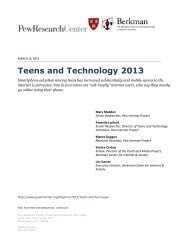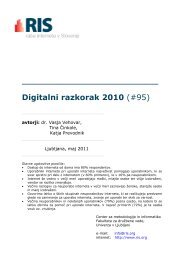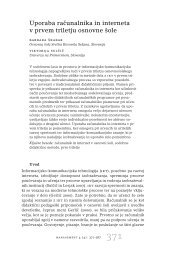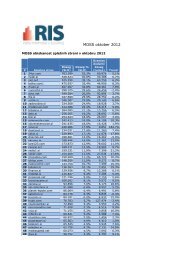the Labour Market Survey Report - Council of European ...
the Labour Market Survey Report - Council of European ...
the Labour Market Survey Report - Council of European ...
You also want an ePaper? Increase the reach of your titles
YUMPU automatically turns print PDFs into web optimized ePapers that Google loves.
The <strong>European</strong> Union figures were assembled from estimates in six country sub-groups:<br />
• Germany<br />
• France<br />
• Italy<br />
• Spain<br />
• UK and<br />
• “O<strong>the</strong>r Western Europe”<br />
for which <strong>the</strong> forecasting proceeded by assuming growth rates (separately) for each year to 2003.<br />
The IDC figures for supply also suffer from <strong>the</strong> fundamental lack <strong>of</strong> realism in assuming that supply<br />
largely arises from those graduating from ICT-related Higher Education courses. As Mason (2000)<br />
confirms, “this approach places too much weight on <strong>the</strong> supply <strong>of</strong> new entrants from <strong>the</strong> full-time<br />
education system and too little on alternative sources <strong>of</strong> new IT skills”.<br />
A more meaningful and “relate-able” analysis was carried out for <strong>the</strong> Career-Space consortium in early<br />
2001 by <strong>the</strong> labour market expert within IBM United Kingdom (Career-Space, 2001). This study used:<br />
• OECD estimates <strong>of</strong> total employment in <strong>the</strong> ICT supply sectors<br />
• forecasts <strong>of</strong> overall economic activity within most Member States from <strong>the</strong> E3M3 model <strong>of</strong><br />
ERECO, and<br />
• estimates <strong>of</strong> employment <strong>of</strong> ICT occupations from total employment in <strong>the</strong> supply sectors based<br />
on <strong>the</strong> occupational structure within <strong>the</strong> U.K, using 9 SOC90 categories that were deemed to<br />
cover all <strong>the</strong> 13 “generic job pr<strong>of</strong>iles” defined by <strong>the</strong> Career-Space initiative.<br />
This approach produced significantly lower estimates <strong>of</strong> both current & recent and forecast future<br />
employment <strong>of</strong> ICT Practitioners in Europe. However, it suffers from errors arising from assumptions<br />
associated with:<br />
• estimating <strong>the</strong> structure <strong>of</strong> occupation sector employment levels within <strong>the</strong> UK, and<br />
• estimating <strong>the</strong> total <strong>European</strong> level based on <strong>the</strong> assumption that <strong>the</strong> occupation sector<br />
structure in o<strong>the</strong>r EU countries is identical with that in <strong>the</strong> UK<br />
The EU total was made up from figures for 14 Member States (Luxembourg was not treated separately<br />
within <strong>the</strong> E3M3 economic model), and <strong>the</strong> forecasting to 2004 proceeded by assuming annual average<br />
growth rates, separately, for each sector-occupation cell defined for <strong>the</strong> study.<br />
The report concluded with proposals for follow-on work: it forecast only employment levels, and did not<br />
attempt to estimate shortage figures.<br />
The mappings between <strong>the</strong> occupational classifications used in <strong>the</strong>se two analyses and that used for this<br />
report are shown in Annex A.<br />
74<br />
| C E P I S I.T. PRACTITIONER SKILLS IN EUROPE | Section 5



